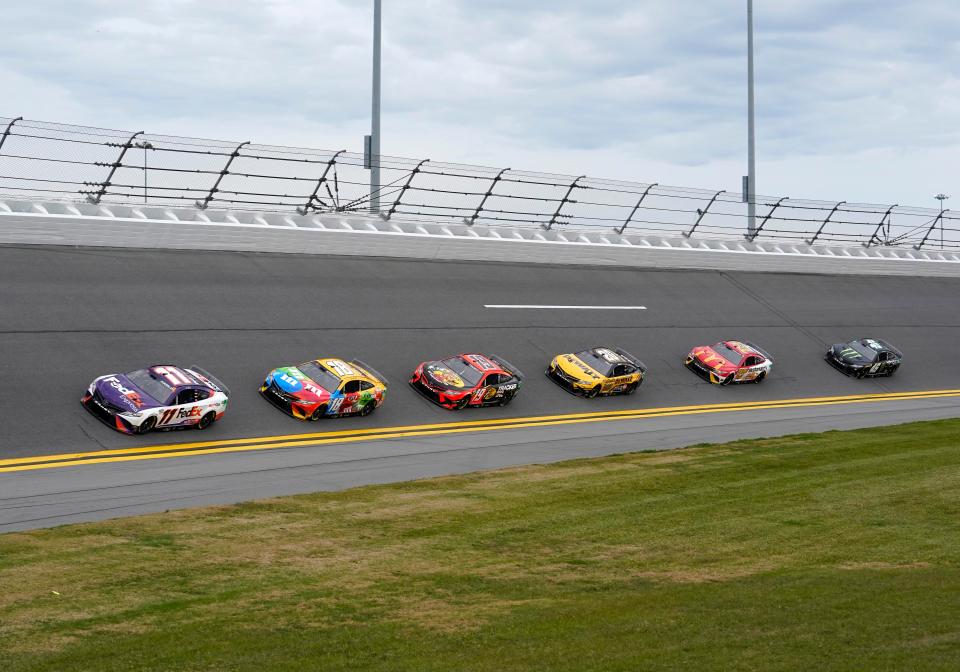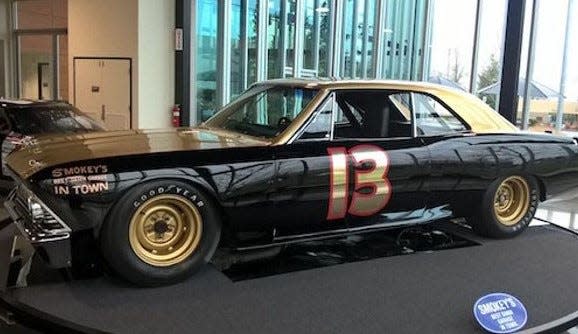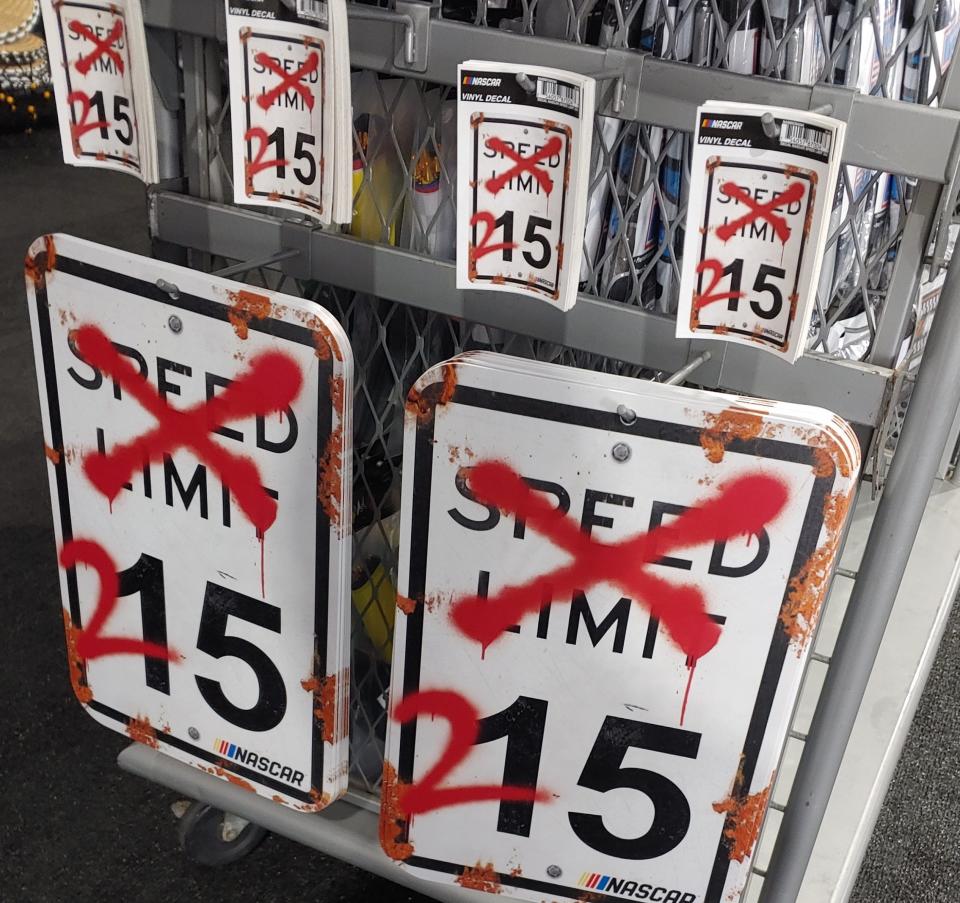KEN WILLIS: Yes, NASCAR has slowed its roll at Daytona, but chaos is unlikely to abide
DAYTONA BEACH — As mentioned here last week, NASCAR seems intent on playing give-and-take with the older region of its fan base.
Well, not sure whether to list this new item as a give or take, but for those wishing they could go back to a place deep in the rear-view, congrats, you’ve got yourself a 2022 Daytona 500 with lap times dating back 55 years.
Kyle Larson won the pole by touring Daytona International Speedway’s 2.5 miles in 49.680 seconds, which, for those of us whose personal dashboards include speedometers instead of stopwatches, equates to 181.159 miles per hour.
NEW GIG: Jeff Gordon returns to Daytona 500 in a new role ... "I've got a real job"
NASCAR ON MOVE: 'This sport is on a different plane': As Daytona 500 nears, NASCAR leadership enjoying new wave of momentum
OTHER DUEL WINNERS: Young and old: Kaz Grala, Greg Biffle work their way into Daytona 500 with start-up teams
Yes, that’s 10 mph slower than last year’s Daytona 500 pole-winning speed. And yes, when the Next Gen car went from concept to blueprint to reality, we were told all along the top-end speeds at Daytona (and Talladega, of course) would be reduced.

Among the positive trade-offs: We're told the driver’s racing ability will grab back some of the overall importance from the engineers.
“I would say it’s about the racing and the action on the track,” says Jim Campbell, Chevrolet’s point-man for auto racing. “The way they’re designed, they put more in the hands of the driver, and they can make it happen and create a great show on the track.”
Campbell’s counterpart with Toyota Racing Development, David Wilson, offers another positive.
“This sport is so visceral,” he says. “It’s the sounds as well, and the smells. We haven’t lost any of that.”
The speed of the NASCAR pole sitter is as slow as -- the pole from how many years ago?
But still, at least psychologically, the fan base will need to adjust the mindset because, well, can’t believe this sentence is being written …
Kyle Larson’s pole speed is the slowest since one of your grandpa’s favorites — Curtis Turner — won the 1967 Daytona 500 pole with a speed of 180.831 mph.
That ’67 pole was quite a little footnote in NASCAR’s early history because it featured the amazing combination of Turner and owner/builder Smokey Yunick, who built the No. 13 Chevelle alongside the Halifax River in Daytona Beach’s Best Damn Garage in Town.

The ancient rumor mill suggests NASCAR’s chief inspector, Bill Gazaway, was prepared to disqualify that speed for any number of reasons — Smokey’s reputation wasn’t exactly a secret. But Big Bill France told Gazaway to put his tape and scale away because this would take NASCAR beyond the 180 mark for the first time, and that would be good for business.
Going forward from there, for the next two decades, Daytona’s speeds would gradually increase, with a here-and-there exception, to the point they went from impressive to scary. It topped out here in 1987 when Bill Elliott topped 210 mph, and was taken beyond 212 three months later by Davey Allison at Talladega.
A couple days after Davey’s razor’s-edge lap, his dad Bobby damn near took down the flag stand with a violent crash that ripped out a bunch of frontstretch fencing and, along with it, dismantled NASCAR’s climb up the speed charts.

Restrictor plates came along soon thereafter, and as mechanics and engineers found end-runs around the obstacles, NASCAR would tighten the screws to maintain a wee bit of sanity.
Sometimes you wonder what the top speeds would be today if nothing had ever been done to constrain them, and whatever number you come up with, it’s hard to imagine it happening without inviting the worst kind of tragedy.
Ironically, these are the lowest speeds since a new aero package was put in place for the fall race at Talladega in 2000, and then the next February’s race at Daytona. Everyone fell in love with it at Talladega, because of Dale Earnhardt’s legendary late-race dash through heavy traffic to snatch the win and further cement his big-track legacy.
Four months later, in February of 2001, the Earnhardt headlines were far different and tragic. The aero package was indirectly blamed by some, directly blamed by others, and shelved for another way of reducing speeds.
Here we are, 21 years later, after two decades of growth and retreat in terms of pole speeds, and we have late-’60s lap times. The speeds will be 190-plus in the draft, but gone for now are broadcasters shouting, “Off Turn 2, two-by-two down the backstretch at 200 miles per hour.”
But don’t for a minute think it’ll look or feel like much of a dial-back for those in the cockpit, not when surrounded by traffic and everyone is wanting the same thing. Trust me, it’ll be nuts near the end, if not earlier.
The difference now is, across all the decades, behind the scenes and, yes, often only after tragedy, much has been learned about protecting equipment and those operating it. Also, this: When Big Bill organized this thing, he wanted speed, but more than that he knew the race audience was hungry for close-quarters competition.
His mantra was well known: “I don’t care which brand of car wins at Daytona, as long as it’s fast and it’s loud.”
Well, they’re damn sure still loud. And unless you’re fixated on that 200 number, they’re still quite fast.
— Reach Ken Willis at ken.willis@news-jrnl.com
This article originally appeared on The Daytona Beach News-Journal: A slow Daytona 500? In a way, yes, but don't expect sanity | KEN WILLIS

